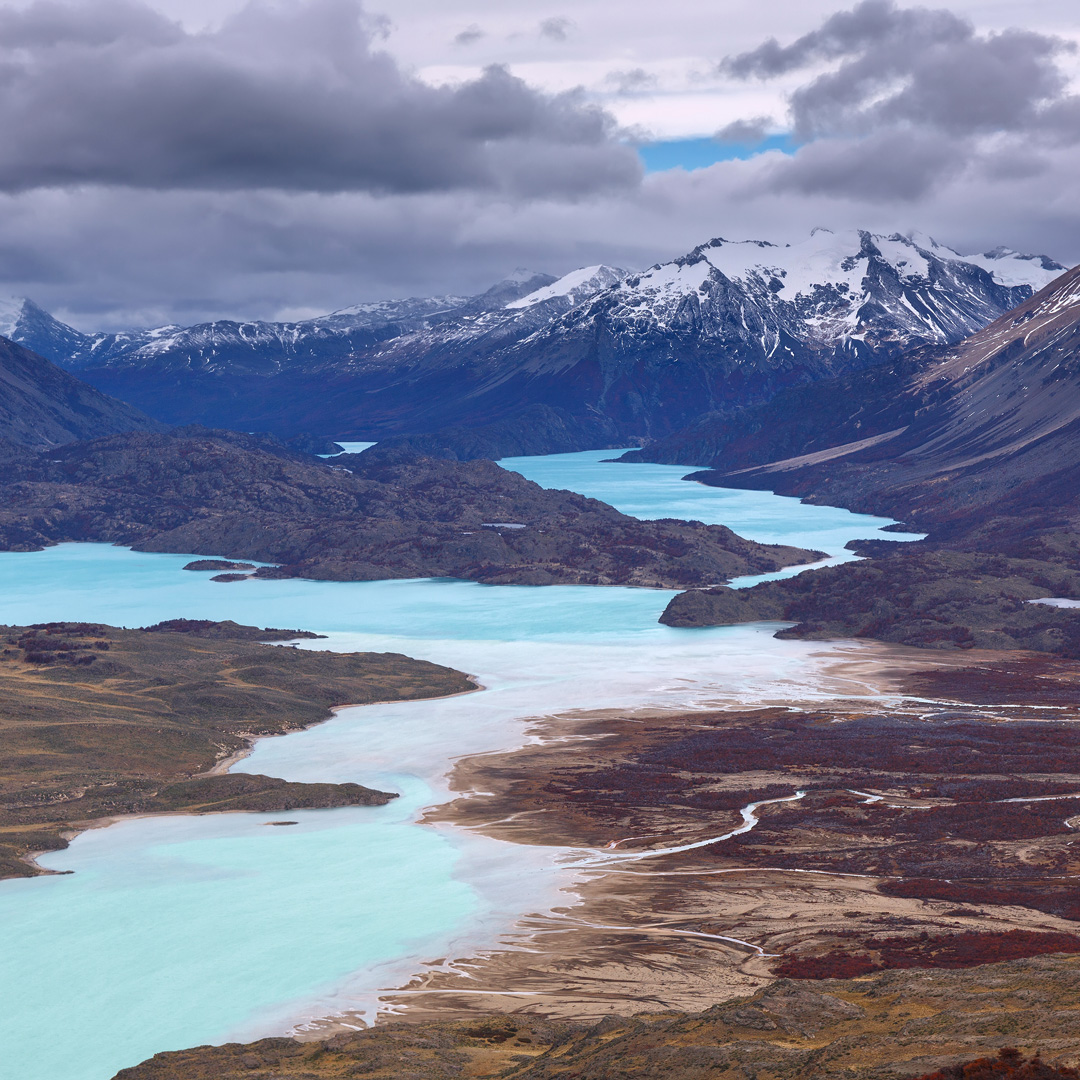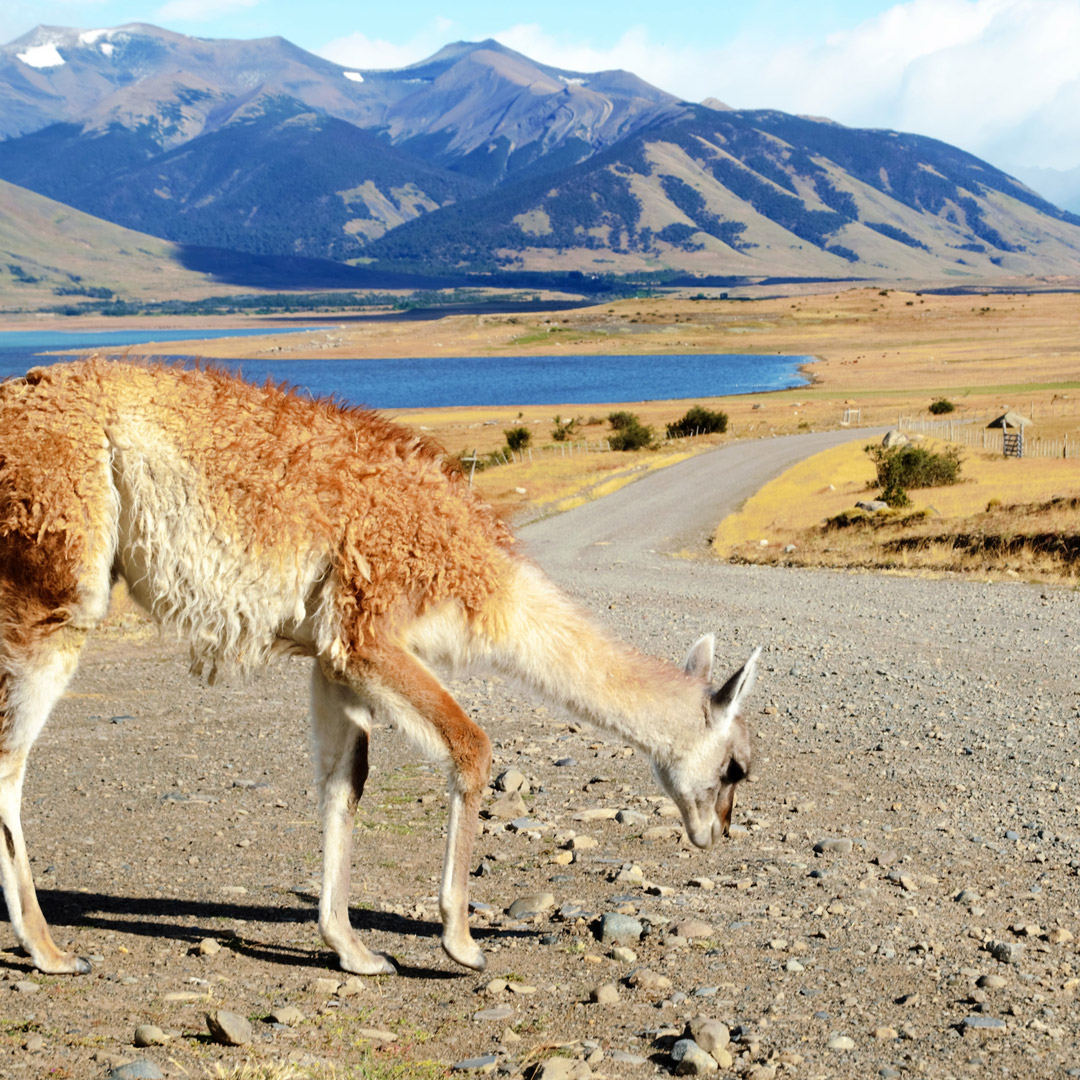Visiting Patagonia’s Perito Moreno National Park
The Sierra Colorada’s intensely colored sedimentary summits are the backdrop for the lake-laden, wind-whipped, and wildlife-rich high country of Parque Nacional Perito Moreno, named for the founder of Argentina’s park system. Possibly Patagonia’s wildest park, where Paleo-Indians covered cave walls with images of guanacos and human hands, it’s a major reason travelers have braved the past rigors of La Cuarenta.

Comprising 115,000 hectares of Patagonian steppe, sub-Antarctic forest, glacial lakes and fjords, and high Andean pastures, the park is 220 kilometers northwest of Gobernador Gregores via RN 40 and RP 37. It’s 310 kilometers southwest of the town of Perito Moreno via RN 40 and RP 37.
At 900 meters, its base elevation is higher than Los Glaciares, and its climate is colder, wetter, and more unpredictable. Its highest summit is 2,254-meter Cerro Mié. Snowcapped 3,700-meter Cerro San Lorenzo, north of the park boundary, is even higher.
In the drier eastern steppes, the dominant vegetation consists of bunch grasses known collectively as coirón. To the west there’s a transitional wind-flagged forest of lenga and ñire, the ubiquitous southern beeches. In more sheltered areas, there are dense and nearly pure lenga stands along the shores of Lago Azara and Lago Nansen.
Troops of guanacos patrol the steppes and even some of the high country where there is summer pasture; the huemul (Andean deer) grazes the uplands in summer but winters at lower elevations. The puma is the top predator, but there are lesser killers in red and gray foxes. The pilquín or chinchillón anaranjado is a species of viscacha unique to Santa Cruz province and southernmost Chile.
The largest birds are the Andean condor and the flightless rhea. Other impressive species include the águila mora (black-chested buzzard eagle), the large ñacurutú owl, Patagonian woodpeckers, and the carancho (crested caracara). The many lakes and streams support abundant wildfowl, including flamingos, black-necked swans, grebes, wild geese, and steamer ducks. Unlike other Patagonian lakes, those within the park have remained free of introduced fish species.

Sights and Recreation
While Lago Burmeister is worth a visit, the cave paintings are closed to public access. There are large troops of guanacos on Península Belgrano, reached by an isthmus immediately west of Estancia Belgrano (which is no longer a tourist ranch).
One of the best day hikes is 1,434-meter Cerro León, a 2.5-hour climb immediately north of Estancia La Oriental, which offers the area’s best, easily accessible panoramas (be prepared for changeable weather). The volcanic overhang known as the Cerro de los Cóndores is the flight school for condor chicks.
Accommodations
There are free but barren campsites with pit toilets at the APN’s Centro de Informes, at the park entrance. The more appealing Lago Burmeister campground consists of Tehuelche-style lean-tos in dense lenga forest. The water is potable, but no supplies are available—campers must bring everything.
On Lago Belgrano’s north shore, Estancia La Oriental (Rivadavia 936, San Julián, Buenos Aires tel./fax 011/4152-6901, Nov.-Apr., US$150 d, US$70 dorm for up to 4 people, camping US$30 per tent for up to 3 people, with hot showers) has both conventional accommodations (seven rooms sleeping up to 22 guests) and protected campsites near the lodge. The breakfasts (US$10) of homemade scones, bread, jam, ham, and cheese deserve a detour, but the dinners (US$35) are nothing special.
Transportation and Services
Rangers at the Centro de Informes, at the park entrance, provide maps and brochures and offer guided hikes and visits; they can also be reached through the APN (Paseo 9 de Julio 610, tel./fax 02962/49-1477, peritomoreno@apn.gov.ar) in Gobernador Gregores. There is no admission charge, but the park closes to the public from May to October.
Rental cars offer the greatest flexibility, though it’s possible to hire a car and driver in Gobernador Gregores or the town of Perito Moreno. Hitching from the highway junction is feasible but uncertain.
